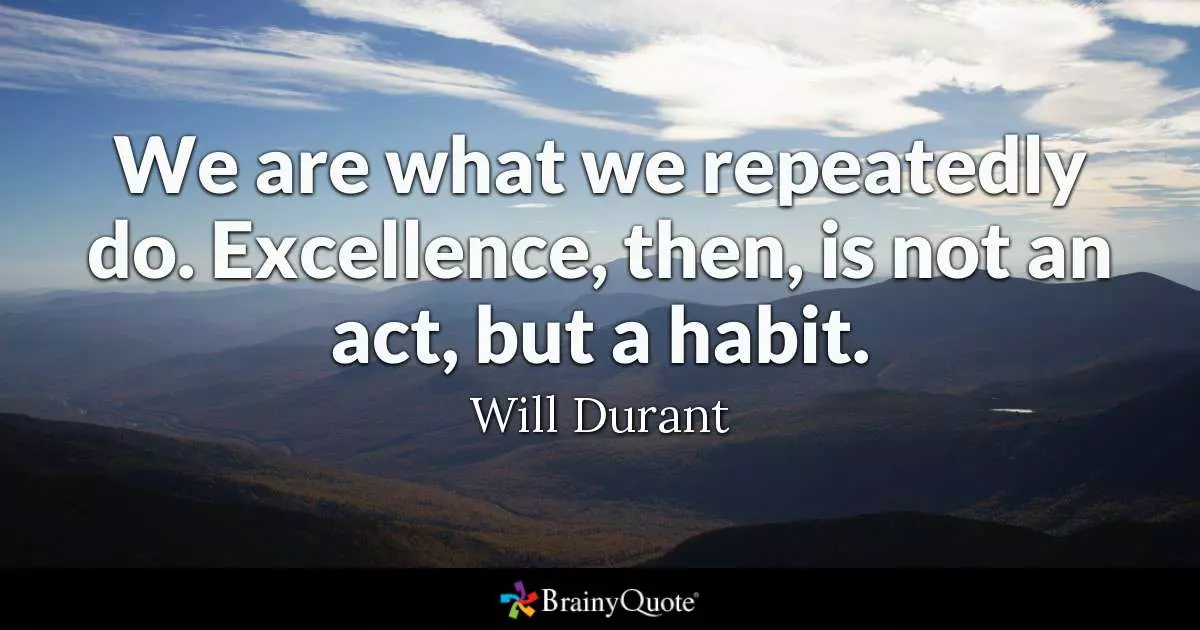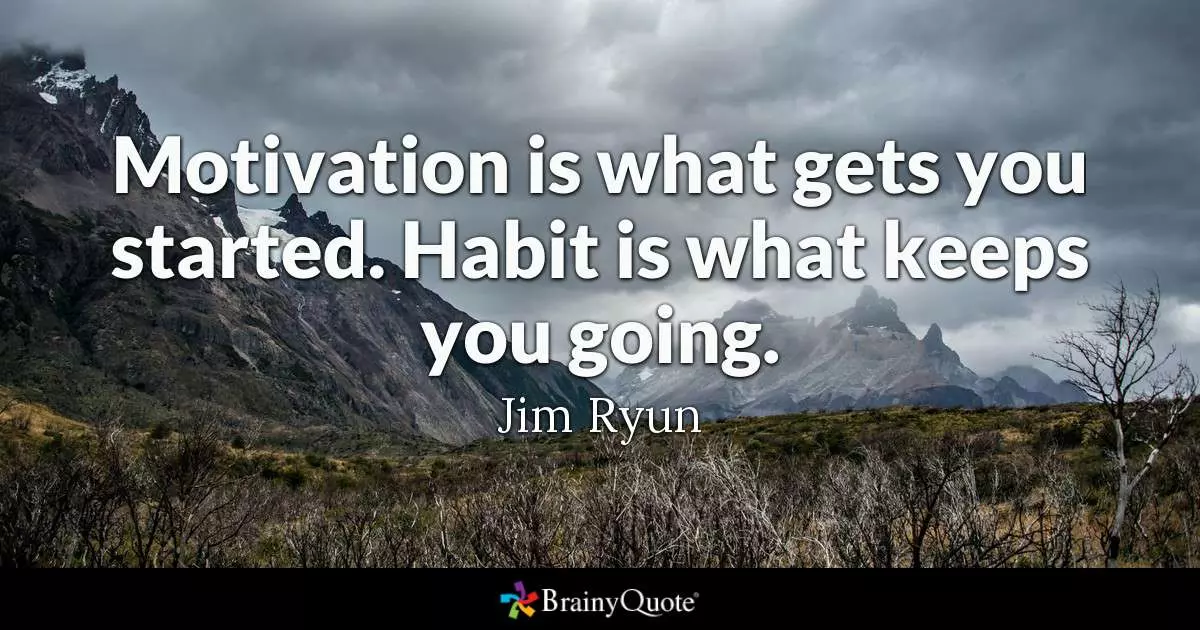
Habits
Everyone loves images so I’m shoving in a couple “inspirational” quotes into this post.

I’m a keen believer in iterative improvement and have a strong opinion against goal setting. I’ll do another post on this in future, but forming and iterating on habits is far superior than focusing on an end goal.
The content of this blog post has been inspired by many sources and my own musings. My favourite reference is The Power of Habit by Charles Duhigg.
Habit Loop
The habit loop is a collection of 3 things.
The cue, the action and the reward. Good and bad habits fit into these boxes, and it’s important to understand how each part works in order to create your own.
cue -> action -> reward
Once you’ve completed your habit enough times, the positive feedback loop will make it easier and easier. It all becomes routine and you’ll start to crave the action to get the reward, salivating at the cue. And requiring motivation will be a thing of the past.

If you are still using motivation, you haven’t yet built the habit. Keep at it, or try optimise your habit loop with some of the ideas below.
Cue
The cue is the trigger that your habit kicks into action.
A cue should be a current recurring behaviour or event. They should occur right before you want the habit action to kick in. They don’t have to be related, but it would help.
Some examples:
- Arriving home from work
- Putting on the kettle
- Your children complain that they are hungry
Action
The action is the new behaviour you want to take place.
The best way to make a good habit is to make the action easy. It doesn’t have to be the complete thing. It just has to get you on the path to complete the goal.
If the completion of the habit action makes it harder to stop than to keep going, you have a successful action. This way, on those days that you really do want to stop, you can without feeling like you have failed.
Consider this example:
Action: Going for a run around the block.
This is a hard, long action and you’ll often struggle to find the motivation to keep it up. Stopping is easier than doing it. This is an action that will fail.
Action: Putting on your running gear and stepping outside.
This is easy. It’s a simple part of your intended goal (running around the block) and once you’re outside, you’ll probably carry on. Some days you’ll really just want to turn around and go back inside and that’s fine, because you are still successfully building your habit.
Reward
The reward is a treat for completing your action.
This can be anything from a literal reward such as a piece of cake, to checking off a box on the calendar, to something trivial like feeling good. So long as your habit ends with a positive outcome, you’ll begin to crave the habit.
Creating a positive feedback loop will cause you to start desiring the action in anticipation of the reward. This is called Classical Conditioning. Turns out we all all just Pavlov’s dogs.
How to Start
Nike and Shia LaBeouf had it right.
Just do it!
– Nike
If it sticks then good. If not, you would have learned something from the experience and the next time you try, you’re already starting in a better position.
Advanced Strategies
Once you’ve started building your habits, there are a couple of advanced strategies you can use for maximising benefits.
Iterate Slowly
If you feel like your habit isn’t working, try changing something a little bit. Use your habits to improve yourself and then use yourself to improve your habits.
Remember that the habit loop flows down, so changing your cue is the most breaking behaviour you can do, while changing the reward is easy.
Habit Stacking
Once you have formed your habit, you can use your existing ones to stack in new actions.
Consider your bathroom routine. The cue is waking up at home, the action stack is going toilet, washing hands, having a shower, brushing teeth, getting dressed, and the reward is sitting down with a coffee. All those actions are stacked.
Bad Habits
It’s worth noting that bad habits follow the same cue -> action -> reward cycle and that removing / altering the cue is the easiest way to break the habit loop.
As an example, if you have a habit of drinking too much when catching up with friends at the pub. You might notice that catching up at a cafe instead, or with a different group of friends is enough to alter the cue and change your habit.
My Habits
A man who can’t bear to share his habits is a man who needs to quit them.
– Stephen King
Here are a couple of my own examples, most of which revolve around exercise because I have a sedentary job that is killing me.
Take the stairs.
- Cue: Need to go up to higher level
- Action: Take the stairs
- Reward: Feels good bruh. (Also bragging rights 😉)
I add a healthy fruit snack and a walk to my morning routine before heading to the office I do my work at (office 2). This one is stacked.
- Cue: Arrive at train station
- Action: Walk to office 1
- Action 2: Put fruit into bag
- Action 3: Walk to office 2
- Reward: Eat a fruit
More walking. I’m naturally frugile so this reward is a big mental benefit for me. This is also the time I listen to audiobooks, which is another motivator.
- Cue: Lunch break
- Action: Walk to supermarket
- Reward: Cheap food / Audiobook
This one is tough, but by eliminating watching TV without is being the cue for exercise, it’s been working.
- Cue: Turn on TV
- Action: Cycle / Free weights
- Reward: Enjoy the show / Glass of milk
Closing
I hope you can use these skills to make some changes in your life. Feel free to comment down below with your experiences.
Thanks for reading
If you enjoyed the content please consider leaving a comment, sharing or hiring me.
Cheers,
Michael
Twitter Facebook Google+
comments powered by Disqus